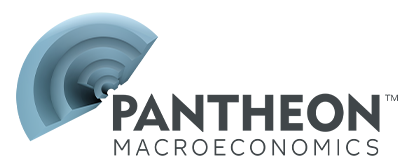Pantheon Publications
Below is a list of our Publications for the last 5 months. If you are looking for reports older than 6 months please email info@pantheonmacro.com, or contact your account rep.
Please use the filters on the right to search for a specific date or topic.
- Banxico opted for a smaller rate cut, balancing better headline inflation against sticky core pressures.
- Its updated forecasts show headline inflation easing but core elevated, delaying convergence to target.
- The more gradual 25bp pace is likely to continue, with data-dependency guiding further cuts in 2025.
- Taiwan’s exports defied expectations in July, rising 42.0% after June’s already-high 33.7% growth.
- Consensus should have it just right for India’s July CPI; early-August data suggest this was the low.
- This week’s BoT meeting is ‘live’; we think the Bank will hold fire in spite of the majority view for a cut.
- China’s monthly export momentum slowed for a second straight month as the US reprieve expiry nears.
- Easing of the seasonally adjusted rate likely reflects fading stockpiling and transshipment demand in July.
- Shipments of pharma and rare earth surged after the ‘London consensus’ and ahead of Section 232 tariffs.
- National data for Q2 suggest a rise in EZ negotiated wage growth after a plunge in Q1.
- Early data for Q3 are mixed, but stable inflation points to wage growth holding broadly steady ahead.
- Falling Irish and German industrial production mean EZ industry had a difficult end to Q2.
- A tight vote split and cautious guidance make the MPC’s August cut to Bank Rate hawkish.
- Inflation averaging 3.7% for the rest of the year means August’s rate cut will be the last in 2025.
- The data-flow will firm up this week, to show GDP growth rebounding and payrolls barely falling.
Flattered by GDP distortions in Q2, but the underlying trend still is solid.
- In one line: Disinflation resumes, but risks linger.
- In one line: Disinflation resumes, but risks linger.
In one line: Industrial output will be revised up; net trade was a drag on GDP growth in Q2.
The Philippines’ Q2 GDP was a skin-deep, consensus-beating print
Sales numbers show worsening momentum heading into Q3
HOUSE PRICES REBOUND IN MAY...
- ...AND WILL CONTINUE TO RISE IN H2
- This year’s consumer slowdown has little to do with worries about taxes, more with trade and tariffs.
- The recent recovery in sentiment reduces recession risk, but the outlook for spending still is dim.
- Rising continuing claims reinforce the idea that the labor market has loosened materially.
- The Philippines’ Q2 GDP beat expectations slightly, with yearly growth ticking up to 5.5% from 5.4%…
- …But this was down largely to a misleading U-turn in net exports, masking a weakening domestically.
- We reiterate our below-consensus 5.3% forecast for 2025, implying a renewed slowdown in H2.
- China’s FX reserves fell less than the market expected, but still staged the first drop since December.
- The currency-valuation effect was the main downward driver, and the bond-valuation effect to a lesser extent.
- The evolution of China’s FX reserves in H2 hinges critically on the outlook for USD and the Fed.
- Industrial production in Germany plunged in June, or did it? We are not so sure.
- Green shoots in leading indicators for German capex, but an inventory overhang still looms in H2.
- German exports remain stuck in the mud, and US tariffs add further downside risk in H2.
- The MPC cut by 25bp but was much more hawkish, with a tighter-than-expected 5-to-4 vote in favour.
- The MPC added more cautious guidance, lifted its inflation forecasts and said upside risks had risen.
- So, we maintain our forecast for no more rate cuts this year, which the market moved closer to pricing.
- In one line: Car registrations will bounce back as borrowing costs fall and the market normalises after duty hikes.
- In one line: Enough for the MPC to cut, but inflation is proving persistent.
- In one line: The PMI should gradually improve as borrowing costs fall and the Government spends big.
In one line: A small increase in both June and Q2 overall.
